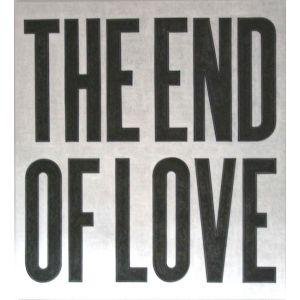David Austen and Man Ray
dal 7/3/2008 al 14/3/2008
Segnalato da
7/3/2008
David Austen and Man Ray
Ingleby Gallery, Edinburgh
Alongside Man Ray's poster for London transports, David Austen exhibits a new painting, 'The End of Love', related to his film 'End of Love', which is currently in development. Set in a gloomy London music hall, a cast of strange characters perform a show at the end of the world.

Emmanuel Radnitzky, known to the world as the artist Man Ray, was born in 1890 in Pennsylvania, USA. In 1915, following his first exhibition in New York, Man Ray met Marcel Duchamp and together with Francis Picabia they formed the New York Dada. Tate Modern's current exhibition 'Duchamp, Man Ray, Picabia' explores the enormous contribution these three friends made to early twentieth century art and celebrates their unique approach to life and work. Though an American by birth, Man Ray went on to spend most of his professional life in Paris and following his move there in 1921, joined the Dada group led by Andre Breton, and subsequently also became involved with the Surrealist movement.
Man Ray is most renowned and celebrated for his work in avant-garde photography, though he considered himself primarily a painter, and made work in many different forms. Working with Lee Miller, he re-invented the photographic technique of solarisation, and created a new form of photogram, the rayogram. It was these innovations that Man Ray drew upon when commissioned by London Transport in 1938 to create a new poster, placing three-dimensional objects directly onto photographic paper and exposing them to light. The result, which David Austen has chosen to show alongside, is quite unlike any other poster of the time. It recently fetched the highest ever price for such an object at auction.
David Austen has kept a reproduction of this poster on the wall of his studio for the past decade, following a visit to the London Transport Museum where it now resides. It is perhaps not surprising that he should be drawn to such a melancholic image; the artist’s own work frequently delves into the darker side of our psyche and experience.
The date of the poster’s publication in 1938 presages an intensely bleak period in history, the beginning of World War II in 1939 which brought with it the Blitz: terrible nights of blackouts, families huddled in the underground (documented hauntingly in drawings by Henry Moore) and the alien shapes of aircraft in the unlit sky. Man Ray himself was forced to leave Paris at this time, going first to London and then America.
Alongside Man Ray’s poster, Austen will exhibit a new painting, 'The End of Love', related to his film 'End of Love', which is currently in development. Set in a gloomy London music hall, a cast of strange characters perform a show at the end of the world. In the centre of the exhibition, he will hang a star mobile, and in one corner, will place a small spray-paint drawing of a moon-like head.
David Austen (born UK, 1960) studied at Maidstone College of Art and the Royal College of Art, London. Known predominantly for his exquisite works on paper and large paintings, in recent years he has also made extraordinary sculptural works, and two highly acclaimed films. Recent solo exhibitions include 'Crackers' at Milton Keynes Art Gallery; 'Smoking Moon' at Camden Arts Centre; and 'Glitter' at Anthony Reynolds Gallery, London (all 2007).
Ingleby Gallery
6 Carlton Terrace - Edinburgh
Admission free



